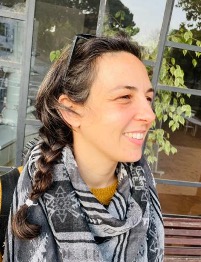
During development, intricate cell and tissue movements are coordinated with molecular and biophysical signals to give rise to the differently shaped organs that compose an organism. I'm interested in studying the basis of this interplay, and how it leads to the emergence of shape.
Developmental (and Evolutionary) Biologist by training, I'm currently working with the Modes and Norden groups in a project that aims to dissect how tissue curvature is achieved during the formation of the vertebrate Optic Cup, the precursor of the retina.
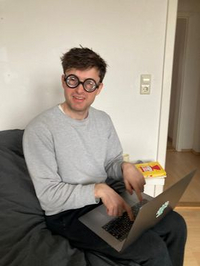
I am currently a postdoc in the Modes group, and an applied mathematician by training. My PhD work most focussed on the mechanics of tissue fluidity through the use of simulations, and rearranged my research into mechano-chemical coupling in the cytoskeleton towards the end. Currently I am oscillating between a range of topics in mechanics, such as cell divisions, pattern formation, like the stripes of a zebra or Fibonacci spirals of plants, and theoretical properties of the models used, like behaviour of the vertex model for epithelia. Somehow I have inflated my share of projects to studying organoid lumen mechanics, too.
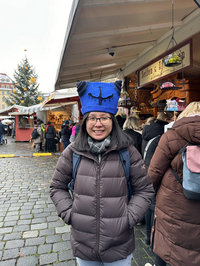
I completed my Bachelors in Physics at Hong Kong University of Science and Technology then proceeded to do a Masters at Universität Stuttgart. I was always interested in all fields in physics and pure mathematics. I developed a particular interest in theoretical condensed matter physics during my undergraduate studies. In both my Bachelors and Masters, I was involved in theoretical studies of the electron transport properties and crystal symmetries of topological semimetals. For my PhD, I decided to switch to soft condensed matter with applications in biology. I started my PhD in 2022, to study shape programmability of gel sheets and its application in modeling morphogenesis. Currently, I am collaborating on the cellular reconstitution of complex 3D tissue shapes.
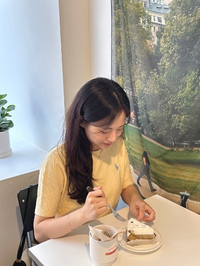
I am currently a university student at Korea University in Seoul, majoring in biology with a double major in computer science. I am doing an internship with the Modes Group, where I am working on modeling shape changes in Drosophila embryos for my first project. Additionally, I am involved in cell segmentation research, constantly seeking ways to link biology with physics and computer science. This internship has broadened my future plans to encompass the global, bio-physical world. Outside of science, I love traveling to different countries, cooking, and trying delicious new foods from around the world!
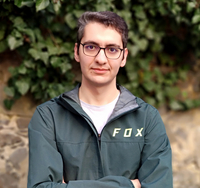
I am generally interested in nontrivial phenomena emerging from the interplay between dynamics and topology. In the past, I was working on the control theory of complex networks, but for my PhD, I decided to work on information processing in living organisms. My projects are aimed at understanding the fundamental limits that arise from various types of noise on the reliability of signal sensing and information processing in cells. I also collaborate with experimentalists to utilize fluctuation analyses to understand pattern formation in developing tissues.
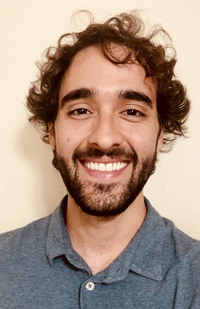
I did my BSc in physics at University of Antioquia, Colombia and later moved to the United States to do my PhD in soft matter physics at Umass Amherst. Most of my research has dealt with the study of shape emergence of physical and biological systems. In general, I seek to understand how shape generation can be explained in terms of simple geometrical and topological rules that can then be used as the building blocks for the design of more complex structures. As a postdoctoral researcher at MPI-CBG I have been working on tissue morphogenesis where I focus on building theoretical models that link collective cellular behaviors that remodel the internal topology of a tissue with well established theories from the shape programming field. Outside the academic life I like to dance, go to the opera, cook, and just walk my dog by the Elbe.
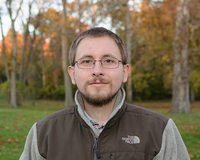
I am a theoretical physicist by training, and in the past I have worked with a wide range of complex systems topics from networks through theoretical ecology and synchronization to neuroscience, all brought together by a common quantitative approach inspired by physics. My current work focuses mainly on the theory of complex networks and its biological applications, and in particular on bringing mathematical rigour to the foundational methods of network science.
website: szhorvat.net

I am interested in understanding how tissues take up complex 3D shapes in developing embryos. To answer this question, I collaborate with biologists to quantify and model shape changing events in the fruit fly embryo. My first project is to understand how wings develop during their transition from larva to pupa. The second project is to understand the role of a furrow between the head and trunk of the embryo. When I am not thinking about development, I like to play board games, learn new things and cook.
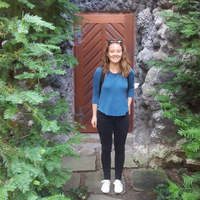
I studied genetics at North Carolina State University as an undergrad. Along the way I also collected minors in Mathematics and Classics. During my Bachelors, I worked on the molecular genetics of rapid speciation underlying sexually dimorphic pigmentation in African cichlid fish. This peaked my interest in pattern formation and morphogenesis, which lead me to a PhD position at EMBL Heidelberg investigating the function of lumen formation in early mammalian embryogenesis. By the end of my PhD, I was heavily invested in developing quantitative image analysis methods that integrating classical developmental biology approaches with geometry. Now, as a postdoc with Carl, I continue developing analysis platforms for experimentalists. I have expanded my interests to network science and topology. Particularly, I enjoy investigating the links between geometric and network topologies as well as attempting to understand how topology and scale are integrated to yield robust morphogenesis.
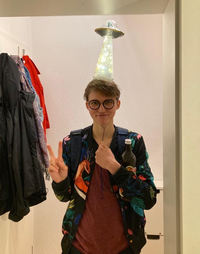
I’m a PhD student with a background in biology with a dash of coding. At university, I studied natural sciences where I focussed on biochemistry for my bachelor’s and on systems biology for my master’s. There, I have dabbled in various projects ranging from plant synthetic biology to the modelling of gene regulatory networks in human gastruloids. I enjoyed the diversity and hoping to maintain some of it, I chose to join Carl’s group. In my PhD, I apply shape-programmability principles to designing microfluidic devices and understanding of morphogenesis. Outside of science, I like climbing things, reading random blogs, baking cakes with questionable flavour combinations, and implementing overly ambitious travel plans to far-away regions of the world.
| Name | Position |
|---|---|
| Stephan Daetwyler | wrap-up predoc/postdoc 2017 – 2018 |
| Albina Klepach | IMPRS summer intern 2018 |
| Fionnuala Curran | IMPRS summer intern 2019 |
| Mark Warner | guest, CSBD Visiting Faculty Program, August 2019 |
| Eduardo Alejandro Lozano Garcia | IMPRS summer intern 2021 |
| Felix Kramer | Predoc 2017-2022 |
| Lucrezia Camilla Ferme | Visiting student 2022 |
| Florian Berger | guest, CSBD Visiting Faculty Program, November 2022 |
| Karen Soans | Predoc 2019-2022 |
| Megha Kattimani | IMPRS summer intern 2023 |
| Yu Meng | Postdoc 2021-2023 |
| Chinmayi Subramanya | Masters Student 2023-2024 |